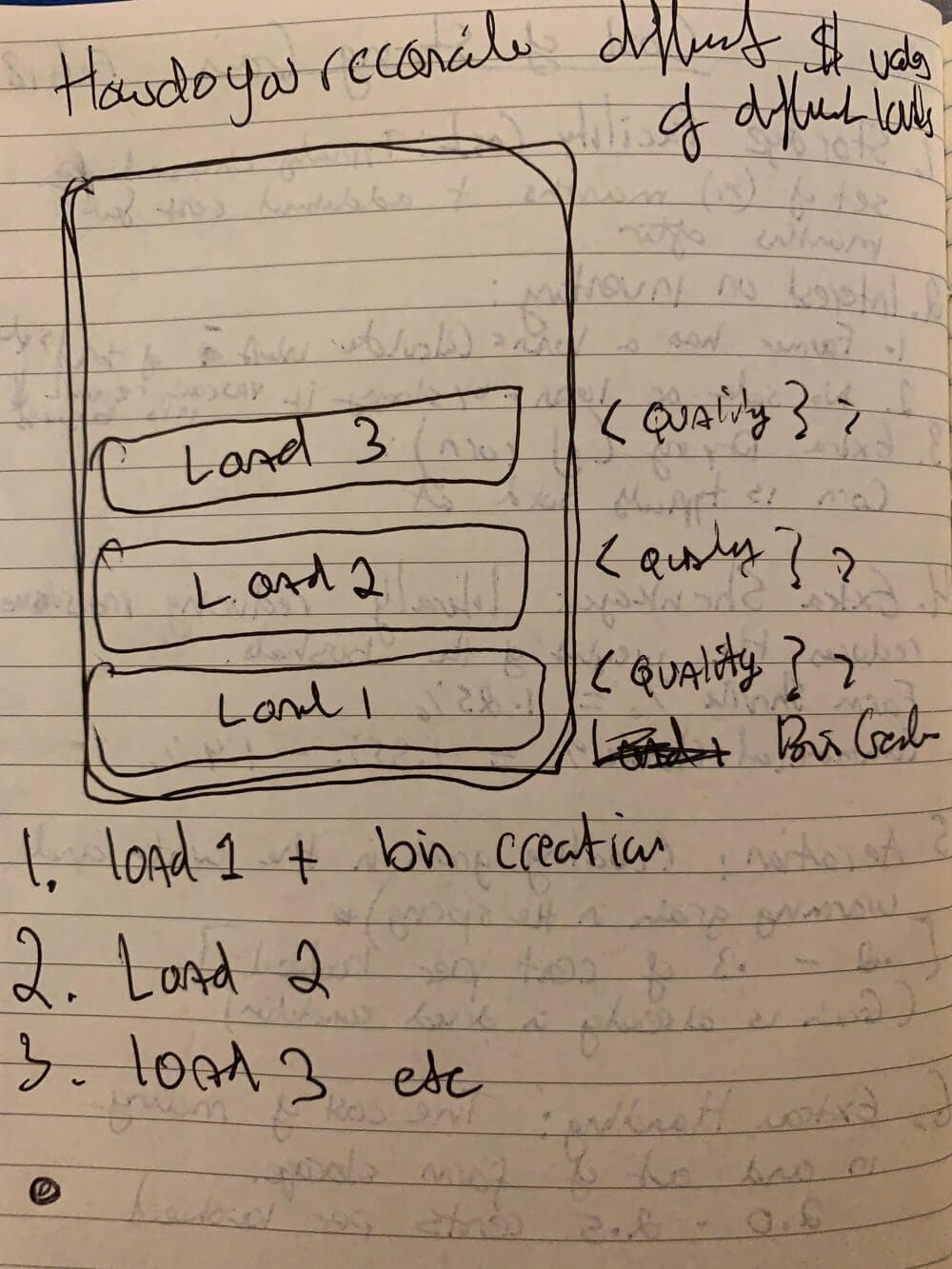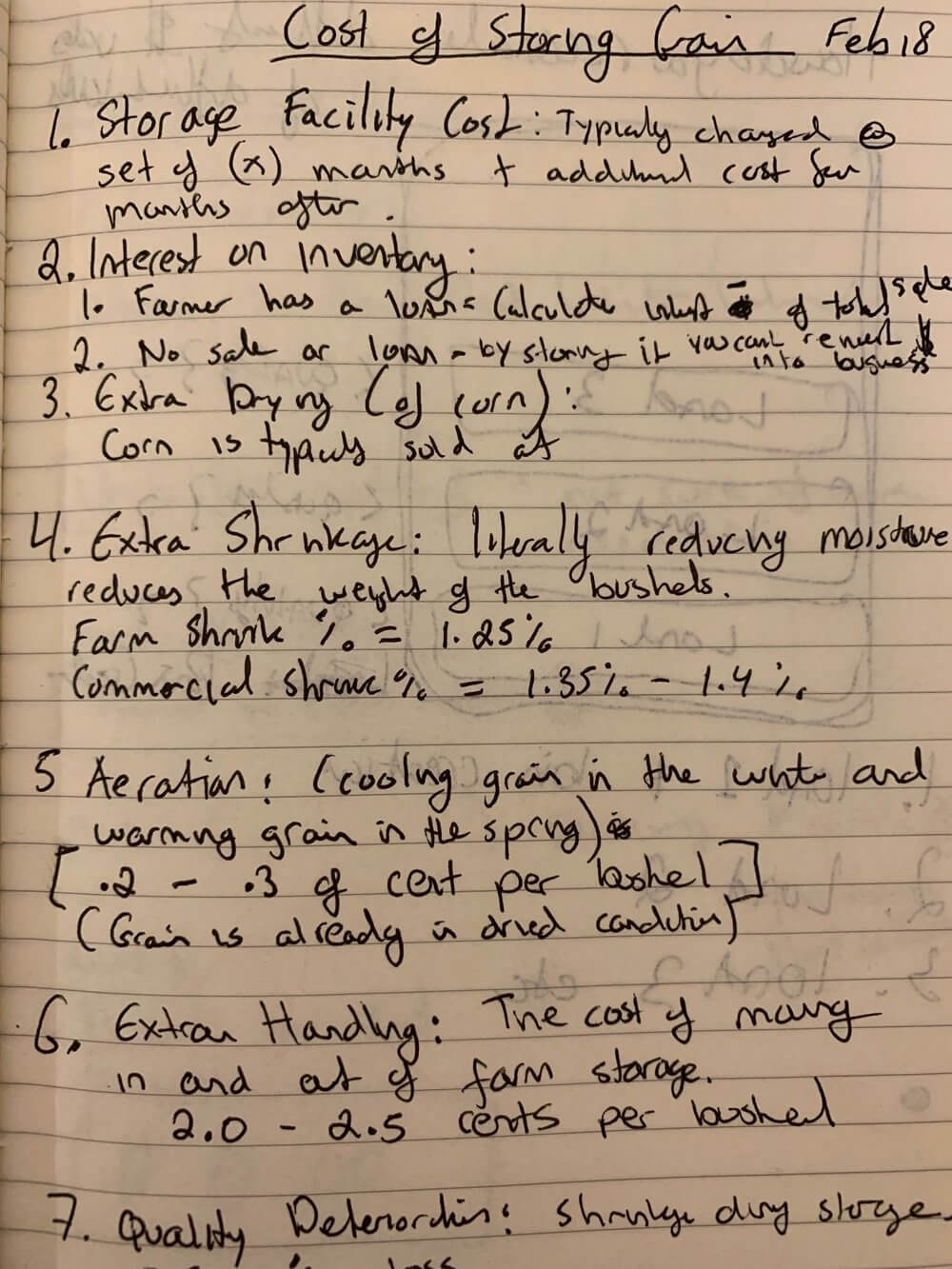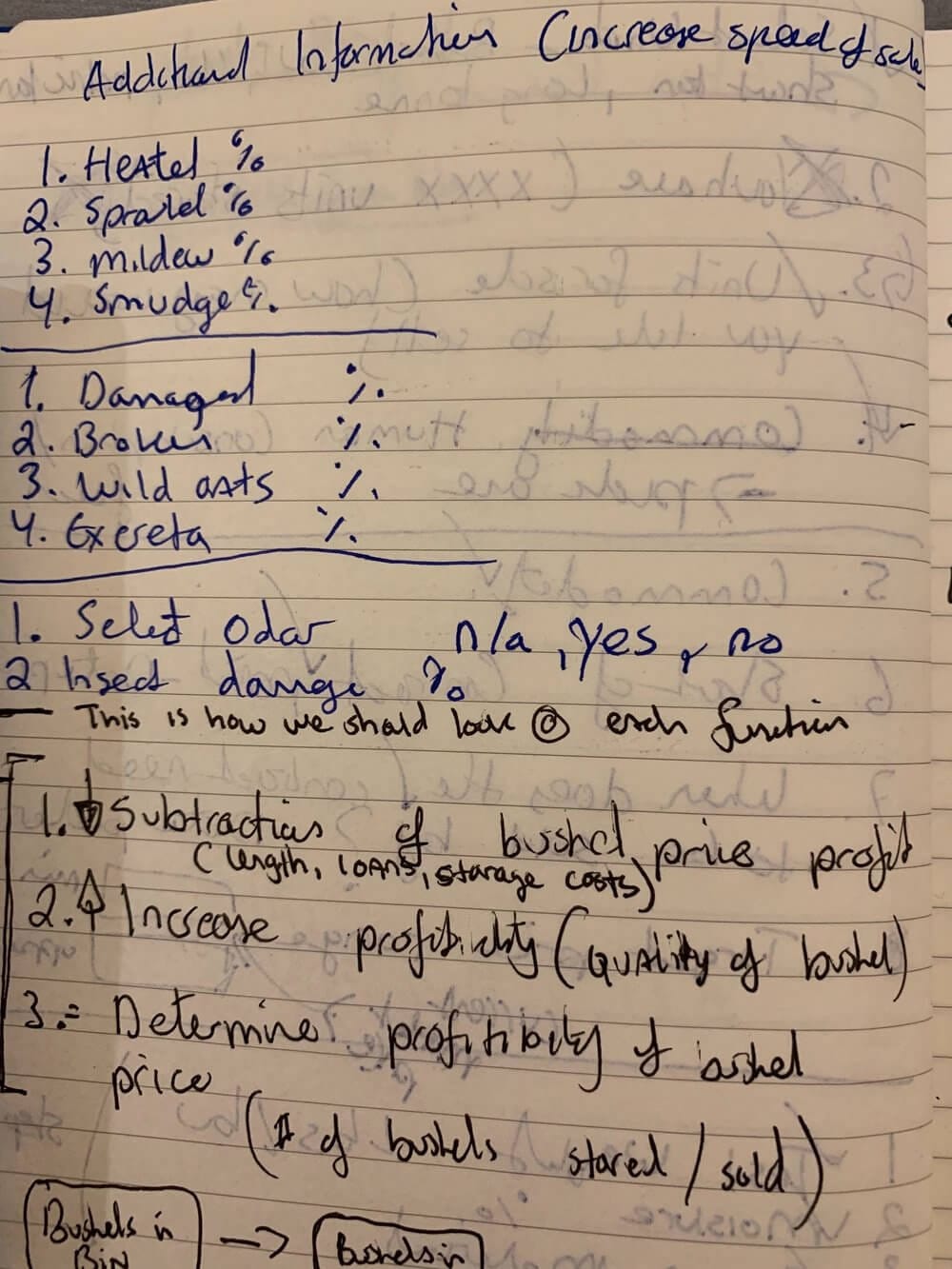
Foreword by Leo (2023)
Now in 2023, companies like BinMaster remotely monitor grain bins. They sell a cloud-based product called BinView that shows accurate bin-level measurements. But even they didn't explore the connection between a grain bin level and how to help the farmer sell on the commodities market. The grain monopoly lives on.
From a design perspective, I look at my old process and note many areas that require improvement. That's great about looking at old projects, even when they are not work projects. There is always room to improve and upskill whenever possible.
Thanks for visiting this side project.
Side Project Summary (2016-2017)
Inspired by the book The Art of Grain Merchandising I dove head first into the world of the ag commodities market. I focused on the farmer who sold his crops for profit.
Based on their grain bin measurements, could I pinpoint the most profitable grain elevator price in a broader geography?
I researched this potential business opportunity and coded a front-end-only prototype I shared with farmers.
- Type: I hand-coded a front-end-only web application prototype (Desktop only)
- Date: November 2016 - February 2017 (3 Months)
- Company: Bins.ai
- Role: Product Designer / Coded prototype
- What I Did: Interviews, User Research, Concepting, Wireframing, Prototyping, Visual Design, Usability Testing
Here are the old blog articles I posted on Medium.

Overview
I wanted bins.ai to be a cloud-based platform that would spot the most profitable grain prices and send automated grain cash contracts to the grain elevator.
Once a farmer has completed the harvest, they store extra commodities in their grain bins. They try to time the commodity market to sell their grain when it's most profitable.
The Bins.ai prototype was shown to farmers to gather feedback and iterate on the primary concept: simplify and modernize grain bin storage and provide live market prices of stored grains.
So, besides storing their grains, they must figure out which grain broker offers the most competitive price. This involves conducting an internet search or calling the grain elevator close to their farms.
Once locked into a price, the farmer must find a way to transport the grain to the elevator. The grain is checked by the grain elevator and then shipped to the coast for transportation to Asia or Europe.
Goals
- Provide the most profitable commodity price to farmers in real-time
- Provide farmer with the capability to track the contents of their grain bin
- Provide exact distance between farm and grain elevator to assist in transportation cost calculations
- Alert the farmer when we find their target price of the commodity
- Ability to email the grain elevator or processor with a spot price bid that matches the farmer's target price range
Role and Process
Interviews & Information Gathering Phase
Process:
I started mapping all the grain elevators and processors in several states. We needed contact information, latitude, and longitude to map distances from the farmers. I logged all significant commodities and their weight conversions across different weight units farmers and grain elevators used and recorded the other grain bin manufacturers and their corresponding bin products. Lastly, I focused on which commodities were most heavily traded in the U.S. market during the last ten years.
Insights:
- A lot of commodities are being sold using different weight conversions. Grain of sale is not standardized across the United States. This posed an exciting challenge regarding how to build a valuable workflow for the farmers to sell their grain.
- Grain bins are not standardized either, and it would make it complex to calculate grain volume in each grain bin.

Important Spreadsheet Links
All files are stored in Box.
- Grain elevator locations in important states
- Zip codes of eight states
- Master grain elevator list
- Commodity APIs
- Master commodity weight conversions
- Grain bin builders and grain bin dimensions
Competitive Analysis
Process:
I analyzed all the current competitors buying and selling commodities in the United States. The insights that this analysis provided were very revealing.
Insights:
- A monopoly of large conglomerates runs the modern grain trade in the U.S. These companies are ADM, Bunge, Cargill, and Louis Dreyfus.
- These transnational, privately held companies own the entire grain trading market in the U.S. and globally.
- We mapped over 800-grain brokers and noted that only a handful of companies owned the websites, and that contact information presented on their websites was not uniform and standard.

User Journey Discovery Phase
Personas
Process:
The primary persona was the farmer growing wheat and other major commodities. This persona sold much of their commodity once they completed their harvest and stored a smaller percentage in their grain bins to sell grain throughout the year if prices were profitable.
Insights:
- The average farmer's age was around 69, which posed an interesting challenge from a user experience perspective.
- Farmers were forced to call the grain broker if they wanted an accurate price of the commodity they wanted to sell. The prices on the grain broker website did not always reflect market prices.
- According to the farmer, there was a tiny choice in who would purchase their grain. They could not gather more prices from a broader regional perspective.
Sketching, Wireframing, and Mockups Phase
Process:
My initial thought process centered around the user flow of how a farmer would check the market value of their commodities. I then worked my way backward and found a starting point. Creating a grain bin and filling it with a commodity proved complex because this process was not standardized in how the user completed that task on the farm.
Insights:
- To display accurate market prices of stored commodities, I figured out how to get users to set up their grain bins easily and simplistically. Trying to match the farmer's grain bin from our inventory of grain bins proved to be too complex.
- After showing some wireframes, I realized users commented that this level of detail in preparing a grain bin was too detailed for them and too much work. This made me realize that many farmers were not necessarily interested in making more profit but just enough to maintain their farm revenue status quo.



Prototyping and Visual Design Phase
Process:
I had never built a website or coded anything at this point. I used Bootstrap as my framework and Sublime to code the entire prototype. I completed HTML, CSS, and JavaScript freeCodeCamp courses to help me understand how to build this prototype.

Insights:
- Building a clickable prototype was a great way to show off this idea to users and gather their feedback.
- Hand coding was an excellent exercise for me to understand coding constraints when architecting and designing wireframes. Working with developers has helped me a lot.
- I still think that after this experience, building detailed clickable wireframes or prototypes is still faster and gets the same result.
Outcome
After testing this prototype with numerous farmers, the feedback was positive. However, the farmers found the idea interesting but would not use it because it was too much work. Ultimately, profit was essential to the farmer, but they didn't chase profits as we thought they might.
They would instead go to the "local" grain elevator/processor and deal with the guys there locally. The idea of arbitrating the commodity they grew on their farm was foreign to them.
I still maintain that if farmers were to form geographical blocks and trade in volume, they could potentially try to arbitrage commodity prices in their favor. However, I do not discount the grain trading transnationals (ADM, Bunge, Cargill, and Louis Dreyfus) and how they operate as a monopoly in North America and globally.
Technology alone cannot penetrate the grain monopoly. However, certain aspects of this side project could be spun into smaller businesses where they could take a tiny market position by targeting farmers and selling them digital and physical products to help them arbitrage their crops.
I'm Leo, the writer behind The Triangle Offense Newsletter. Diving deep into UX, CX, and customer-centric business strategy, I provide insights into using timeless CX and UX techniques to attract and retain customers to unlock business growth. Join me on this journey, and let's reshape how to grow a business together.a
